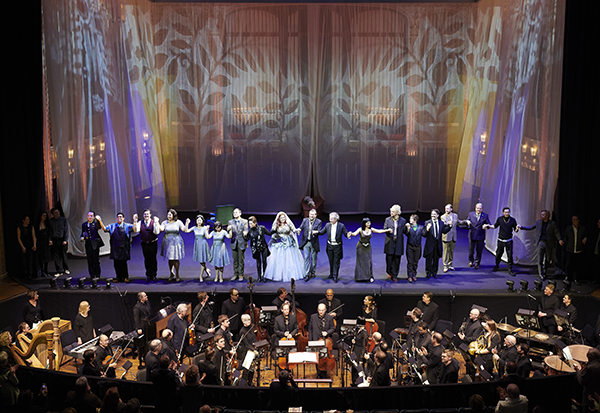by Daniel Hathaway

The lengthy genesis of this collaborative work, which reflects the contrasting personalities of the composer and his librettist, Hugo von Hofmannsthal, as well as the caesura between the worlds of serious opera and commedia dell’arte, is fascinating. But if you end up not quite understanding Hofmannsthal’s original concept, it’s comforting to learn that Strauss didn’t get it either — at first.

But dinner has gone on too long, and the Major Domo orders that the opera and the comedy be performed simultaneously in order to end in time for fireworks. That pitches everyone, but especially the composer (mezzo-soprano Kate Lindsey) and Zerbinetta, the leader of the comedy troupe (soprano Daniela Fally), into an artistic row, and sets up an impending collision between competing art forms.





Actor Wolfgang Brendel rose from his front-row seat to play a commanding Major Domo, and Hanno Müeller-Brachmann (Music Master) and Jonas Hacker (Dance Master) handsomely filled out the cast in the Prologue, supported by Conor Brereton (Officer), Shawn Roth (Lackey), and Francisco X. Prado (Wigmaker).

Frederic Wake-Walker’s direction and Alexander V. Nichols’ projection, lighting, and set design, and Jason Southgate’s costumes beautifully complemented the ambiance of the space. Ariadne’s wedding dress and some of the projections even picked up architectural details of Severance Hall.

Photos by Roger Mastroianni, courtesy of The Cleveland Orchestra.
Published on ClevelandClassical.com January 17, 2019.
Click here for a printable copy of this article





